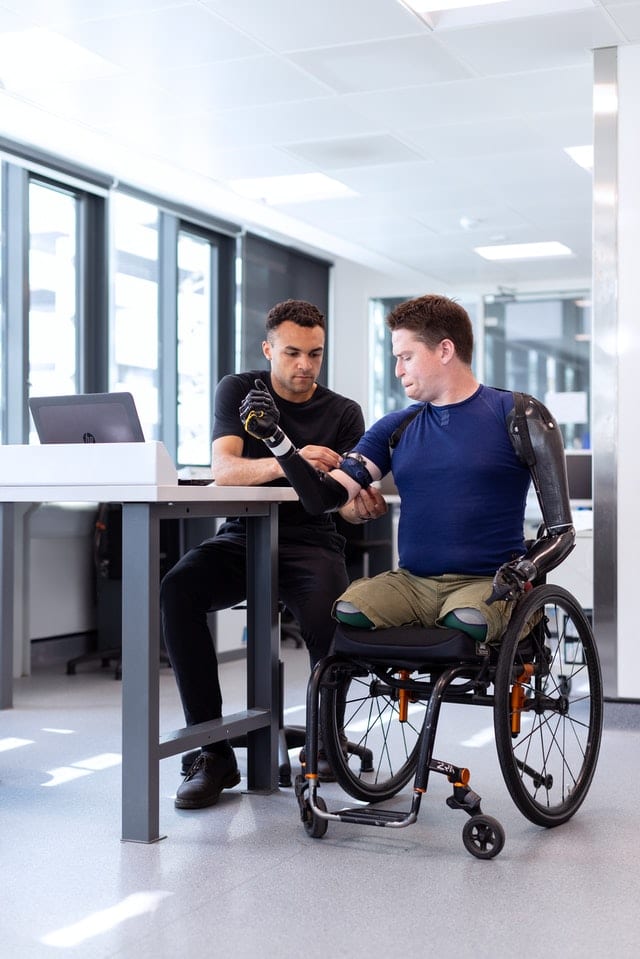A child can get monthly SSI payments if he or she has impairment(s) that meets Social Security’s definition of “disabled” for children, and meets age and financial requirements. Impairment(s) must cause “marked and severe functional limitations” in order to be found disabling. We began our discussion about child SSI in part 1 which is available at https://cardealawgroup.com/articles. Today, we unpack steps 2 and 3 of the three-step process and discuss some of the medical and other evidence needed as proof those steps.
SSA uses a three-step process for child SSI to decide disability. The steps are:
Step 1. Is the child working or engaging in substantial gainful work activity (SGA)? SGA (non-blind) is presumed at $1,260 a month in 2020. If a child is working at an SGA level, the child’s SSI claim will be denied. If a child is not working or earning SGA, SSA moves to step 2.
Step 2. Does the child have a medically determined impairment (MDI), or combination of impairments, that is “severe”? An MDI must be established by objective medical evidence from an “acceptable medical source”. A “severe” impairment is considered to be one that results in more than minimal limitations. If not, the child’s SSI claim will be denied. If the child has a severe impairment, SSA moves to step 3.
Step 3. Does the child’s impairment(s) meet, or medically equal one of the listings in the Listing of Impairments, or does the child’s impairment(s) functionally equal the listing? Proof at this step requires significant medical and evidence and is critical as to whether the child’s impairment(s) are determined to be disabling. Child SSI can be allowed only at step 3.
Establishing an MDI that is “Severe” and Meets the Durational Requirement at Step 2
An MDI is established by objective medical evidence of signs, laboratory findings, or both. Examples of signs are fever, swelling, and clubbing of the fingers. Examples of laboratory findings are blood tests, electrophysiological studies, such as electrocardiograms, and medical imagining, such as x-rays, MRI and CT scans. The objective medical evidence must be from at least one acceptable medical source. A diagnosis must be supported by signs, laboratory findings or both. Acceptable medical sources include:
- Licensed physician (medical or osteopathic doctor);
- Licensed psychologist in independent practice; or licensed or certified school psychologist, or other licensed or certified individual who performs the same function as a school psychologist in a school setting, for impairments of intellectual disability, learning disabilities, and borderline intellectual functioning only;
- Licensed optometrist for impairments of visual disorders, or measurement of visual acuity and visual fields only, depending on the scope of practice in the State in which the optometrist practices;
- Licensed podiatrist for impairments of the foot, or foot and ankle only, depending on whether the State in which the podiatrist practices permits the practice of podiatry on the foot only, or the foot and ankle;
- Qualified speech-language pathologist for speech or language impairments only. For this source, qualified means that the speech-language pathologist must be licensed by the State professional licensing agency, or be fully certified by the State education agency in the State in which he or she practices, or hold a Certificate of Clinical Competence in Speech-Language Pathology from the American Speech-Language-Hearing Association;
- Licensed audiologist for impairments of hearing loss, auditory processing disorders, and balance disorders within the licensed scope of practice only (with respect to claims filed on or after March 27, 2017);
- Licensed Advanced Practice Registered Nurse, or other licensed advanced practice nurse with another title, for impairments within his or her licensed scope of practice (only with respect to claims filed on or after March 27, 2017); or
- Licensed Physician Assistant for impairments within his or her licensed scope of practice (only with respect to claims filed on or after March 27, 2017).
An impairment is “severe” when it causes more than minimal functional limitations. Severe impairment(s) must meet the durational retirement to last or be expected to last for at least 12 months or result in death.
Other Important Evidence to use in a Child SSI claim once the MDI is established
Once an MDI is established, information from others in addition to acceptable medical sources can be used to document the degree of limitations caused by impairment(s) and describe the child’s ability to function independently, appropriately, and effectively in an age-appropriate manner. Additional information can be from a “medical source”, such as a healthcare worker, a speech-language pathologist, or a school psychologist licensed. Also, information from “nonmedical sources” are important to proving your child’s case. Nonmedical sources include:
- Educational personnel, such as school teachers, counselors, early intervention team members, developmental center workers, and daycare center workers;
- Public and private social welfare agency personnel; and
- Your child, your child’s family members, caregivers, friends, neighbors, employers, and clergy.
SSA will also consider school records, such as an Individualized Education Plan (IEP), and reports, such as progress reports or report cards, in evaluating the child’s limitations.
Whether the Child’s Impairment(s) Meets or Medically Equals a Listing in the Listing of Impairments at Step 3
The listings sets out for each major body system the criteria resulting in “marked and severe functional limitations” that are disabling. Part A of the listings is generally for adults, but can be used by children under certain circumstances. Part B of the listings is for children and gives appropriate consideration to the child’s growth and development, as well as the effects of the disease process in childhood. A listing is met when an impairment meets every criteria in the listing.
An impairment or combination of impairments is medically equivalent to a listing if the medical evidence is at least equal in severity and duration to listing criteria.
Whether the Child’s Impairment(s) Functionally Equals the Listing at Step 3
If a child’s impairment(s) do not meet or medically equal any listing, SSA moves to the last part of step three to decide whether the child’s impairment(s) results in limitations that functionally equal the listings. There are six broad areas of functioning called domains that SSA looks at when determining whether or not a child’s impairment(s) is functionally equivalent to the listings. These six domains are intended to cover everything that your child can and cannot do. The child’s impairment(s) must cause “marked and severe functional limitations” in order to be found disabling. The six domains of functioning in SSA regulations are:
- Acquiring and using information
- Attending and completing tasks
- Interacting and relating to others
- Moving about and manipulating items
- Self-care
- Health and physical well-being
While functional equivalence is a challenging and complex analysis, SSA allows more children in this part of the analysis than any other part. To functionally equal the listings, the child’s impairment(s) must result in “marked” limitations in two of six domains of functioning or an “extreme” limitation in one of six domains. “Marked” is defined as serious interference of the child’s ability to function. A “marked” limitation also means a limitation that is “more than moderate” but “less than extreme.” It is the equivalent of the functioning on standardized testing with valid scores that are at least two, but less than three, standard deviations below the mean. “Extreme” is very severe interference with the child’s ability to function. SSA will find that a child has an “extreme” limitation when the child has a valid score that is three standard deviations or more below the mean on a comprehensive standardized test designed to measure ability or functioning in that domain, and your day-to-day functioning in domain-related activities is consistent with that score. However, no single piece of information taken in isolation can establish whether the child has a “marked” or an “extreme” limitation in a domain.
SSA will look at the information about how the child’s functioning is affected during all activities, including those the child engages in at home, at school, and in the community. SSA may find that a limitation may be the result of interactive and cumulative effects of one or more impairments, SSA will consider evidence from medical sources describing the child’s limitations and restrictions. SSA also considers school records, including an IEP, and test scores, and other reports, such as attendance records and disciplinary reports. In addition, SSA considers information from people who know the child well, such as parents and teachers, who can describe the child’s functioning at home, in childcare, at school, and in your community. The Function Report – Child forms (SSA-3375 through SSA-3379) are used in child SSI cases to obtain functional information from the parent(s), and from other caregivers. On appeal, SSA uses Questionnire for Children Claiming SSI Benefits SSA-3381 to record information about nonmedical sources of evidence who can provide information about the child’s functioning. SSA will ask the child’s teacher to complete the Teacher Questionnaire Form 5665 and will ask for school records or other information using a Request for Administrative Information SSA-5666 In some instances, SSA may request that the child go to a consultative examination.
SSA considers how appropriately, effectively, and independently a child performs activities compared to how children their age who do not have impairments perform those activities. SSA assesses functional limitations by considering:
- How well a child can initiate and sustain activities;
- How much extra help a child needs, and the effects of structured or supportive settings;
- How a child functions in school;
- The effects of medications or other treatment; and
- How the child’s impairment-related symptoms affect functioning.
Therefore, you can strengthen your child’s SSI application by providing additional information and detail about your child’s functional limitations.
Each domain, with the exception of the sixth domain, Health and Physical Well-Being, contains age-appropriate criteria. For the sixth domain, SSA may consider a child to have a “marked” limitation if the child is frequently ill because of his or her impairment(s) or has frequent exacerbations that result in significant, documented symptoms or signs. A child’s description of symptoms is an important part of proving a child SSI case. If the child is unable to describe his or her symptoms, SSA will accept a description of the symptoms from a person familiar with the child, such as a parent or guardian. Examples of symptoms include pain, fatigue, shortness of breath, weakness, nervousness, and side-effects from medication. The description of the child’s symptoms can include the precipitating and aggravating factors, intensity, persistence and the limiting effects caused by the symptoms. SSA collects information about a child’s pain symptoms on for SSA-3371 Pain Report – Child. For more information, see SSR 16-3p: Titles II and XVI: Evaluation of Symptoms in Disability Claims.
For purposes of the sixth domain, “frequent” means episodes of illness or exacerbations that occur on an average of 3 times a year, or once every 4 months, each lasting 2 weeks or more. SSA may also find a child to have a “marked” limitation if the child has episodes that occur more often than 3 times in a year or once every 4 months but do not last for 2 weeks, or occur less often than an average of 3 times a year or once every 4 months but last longer than 2 weeks, if the overall effect (based on the length of the episode(s) or its frequency) is equivalent in severity.
Social Security Rulings, published in March 2009, add greater guidance about determining functional equivalence for children. See:
SSR 09-1p: Title XVI: Determining Childhood Disability Under the Functional Equivalence Rule —The “Whole Child” Approach
SSR 09-2p: Title: Determining Childhood Disability — Documenting a Child’s Impairment-Related Limitations
SSR 09-3p: Title XVI: Determining Childhood Disability — The Functional Equivalence Domain of “Acquiring and Using Information”
SSR 09-4p: Title XVI: Determining Childhood Disability — The Functional Equivalence Domain of “Attending and Completing Tasks”
SSR 09-5p: Title XVI: Determining Childhood Disability — “Interacting and Relating with Others”
SSR 09-6p: Title XVI: Determining Childhood Disability — The Functional Equivalence Domain of “Moving About and Manipulating Objects”
SSR 09-7p: Title XVI: Determining Childhood Disability — The Functional Equivalence Domain of “Caring for Yourself”
SSR 09-8p: Title XVI: Determining Childhood Disability — The Functional Equivalence Domain of “Health and Physical Well-Being”
Tips on Using Medical and Other Evidence to Prove Impairment(s) Functionally Equals a Listing
- Encourage your child to describe to you his or her impairment(s), symptoms, and limitations. Being able to express abilities and limitations will be helpful at a hearing before an Administrative Law Judge. The child is expected to attend the hearing and will likely be asked questions about impairment(s) and the effect on his or her daily activities.
- As a parent or caregiver, focus on when and where the child needs extra help (more help than a child of the same age without impairments would need). Describe in writing the nature and extent of the help required and any accommodations to assist the child. Make sure to describe all additional help provided to the child to cope with his impairments such as additional supervision, help getting dressed or eating, help with grooming, additional help with doing homework or after-school activities.
- Ask for the help of other caregivers to describe in writing the child’s functional limitations they have seen. The term “caregiver,” as used by SSA, means a person who has a close, familial-type relationship with a child. A child’s parent is usually a caregiver, but other individuals may also be caregivers. For example, grandparents, siblings, other relatives, or nonrelatives with whom the child lives or spends a lot of time. Some caregivers may present testimony if you have a hearing before an Administrative Law Judge.
- Ask professionals who conducted the child’s testing to provide interpreted test results that are easily understood and compared to SSA requirements.
- If the child requires a nurse, home health aide, or other professional assistance, make sure that SSA knows details about this additional help.
- If the child needs an assistive device or assistive technology, get medical documentation of this need.
- Seek support from the child’s teacher by having a meeting and discussing the child’s functioning at school. If the child’s teacher says the child is doing well, clarify whether the teacher is comparing the child to others with similar accommodations or children of the child’s age who do not have limitations. You may want to provide the teacher with Childhood Disability: Supplemental Security Income Program A Guide for School Professionals for information. Offer to provide any necessary information about your child’s functioning to assist the child’s teacher when answering the Teacher Questionnaire Form SSA-5665.
- Obtain copies of school evaluations, testing, education plans, and other important documents to help create a complete profile of the child and the extent to which, his or her impairment(s) affects day-to-day functioning.
- If the child receives help from a tutor outside of school, make sure that you get that information to SSA so that they know the child requires additional help.
Contact a Social Security Disability Representative to Help with Your Child’s SSI Claim
Filing a child SSI claim is a complex process. You must provide proof that your child has a disability and meets all of the age and financial requirements. A Social Security disability representative can help you complete an application for your child and obtain the necessary medical and other evidence to prove your child’s claim. If you need assistance with your child’s SSI claim, contact an experienced Social Security disability representative at Cardea Disability, LLC at 334-440-6261 or visit our website at Cardeadisabilityllc.com.

 Am I eligible for Veterans Administration (VA) disability benefits?
Am I eligible for Veterans Administration (VA) disability benefits? What is a VA disability rating?
What is a VA disability rating? VA Dependency and Indemnity Compensation (DIC) coverage is available for widows and children of veterans who died of service-connected impairments. For example, a Vietnam War veteran exposed to Agent Orange developed heart disease. If the veteran was receiving veterans benefits for heart disease and then died of heart disease, the family left behind may be eligible for benefits.
VA Dependency and Indemnity Compensation (DIC) coverage is available for widows and children of veterans who died of service-connected impairments. For example, a Vietnam War veteran exposed to Agent Orange developed heart disease. If the veteran was receiving veterans benefits for heart disease and then died of heart disease, the family left behind may be eligible for benefits.